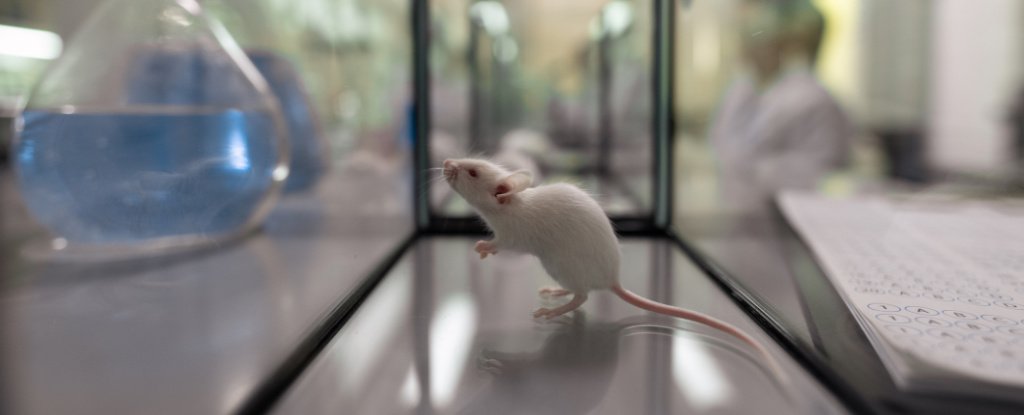A method to 'time jump' human skin cells by 30 years has been developed. "In 2007, Shinya Yamanaka was the first scientist to turn normal cells, which have a specific function, into stem cells which have the special ability to develop into any cell type. The full process of stem cell reprogramming takes around 50 days using four key molecules called the Yamanaka factors. The new method, called 'maturation phase transient reprogramming', exposes cells to Yamanaka factors for just 13 days. At this point, age-related changes are removed and the cells have temporarily lost their identity. The partly reprogrammed cells were given time to grow under normal conditions, to observe whether their specific skin cell function returned. Genome analysis showed that cells had regained markers characteristic of skin cells (fibroblasts), and this was confirmed by observing collagen production in the reprogrammed cells."
"Researchers looked at multiple measures of cellular age. The first is the epigenetic clock, where chemical tags present throughout the genome indicate age. The second is the transcriptome, all the gene readouts produced by the cell. By these two measures, the reprogrammed cells matched the profile of cells that were 30 years younger compared to reference data sets."
So what this is all about is that if you take a cell such as a skin cell, and take them all the way back to embryonic stem cells -- which are called "induced" pluripotent stem cells (iPSCs) because they don't become stem cells by themselves, someone has to 'induce' them -- then they can turn into any cell, but you probably don't want that -- you just want to reset your skin cells to age = 0 but keep them as skin cells. Previous attempts just rolled back the age a little, because they didn't fully activate the "pluripotency" genes.
What they did here was first ensure that all of the aforementioned "Yamanaka factors" (which are genes known as Oct4, Sox2, Klf4, c-Myc, and GFP, in case you were wondering) are expressed. This reprogramming is capable of generating pluripotent stem cell (iPSC) cells. As mentioned between 10 and 17 days, they switch and execute their "MPTR protocol". MPTR stands for "maturation-phase transient reprogramming". The way it actually works, though, is, well, first you have to realize they somehow got the aforementioned "Yamanaka factors" to require a chemical called doxycycline before they get the "Yamanaka factors" to "induce" the cell into becoming an "induced" pluripotent stem cell (iPSC). Then, what they do at the right point in the 10 to 17 day window is withdraw the doxycycline. Weirdly, doxycycline, in case you're wondering what that is, is an antibiotic. It's a tetracycline antibiotic where "tetracycline" means they are molecules with 4 fused rings.
Anyway, after this procedure, 25% of the skin cells went back to age 0. This is from cells from people aged 38 to 53 and the cells' epigenetic expression indicated the same age.
Most of the rest of what's described in the paper is the process used to verify that the skin cells had regained their skin cell function. They looked at them under regular light microscopes and found, "The cells had undergone a mesenchymal to epithelial like transition and were forming colony structures that progressively became larger with longer periods of reprogramming, consistent with the emergence of the early pluripotency marker SSEA4." "Mesenchymal" means cells of connective tissue while "epithelial" means skin cells. SSEA4 is an antibody that normally appears on the surface of skin cells.
"We investigated further the identity of the cells after MPTR by conducting DNA methylation array analysis and RNA sequencing to examine their methylomes and transcriptomes." "Cells lose aspects of the fibroblast transcriptional program and/or gain aspects of pluripotency transcriptional program, which is consistent with the loss of the fibroblast surface marker CD13 and gain of the iPSC surface marker SSEA4." The function of CD13 is something to do with cell-cell fusion, but I don't know exactly what -- the important thing to note here is that its expression is expected with connective tissue (fibroblast) cells.
"Transiently reprogrammed cells did not express the pluripotency marker NANOG and expressed high levels of the fibroblast marker FSP1. Notably, NANOG was temporarily expressed at high levels at the intermediate stages of transient reprogramming alongside FSP1, suggesting that these cells simultaneously possessed some transcriptional attributes of both fibroblasts and iPSCs."
The name "NANOG" comes from an Irish phrase that means "Land of the Young", and refers to a protein that helps embryonic stem cells maintain pluripotency -- pluripotency meaning the ability to transform into any cell type.
FSP1 stands for "ferroptosis suppressor protein 1". If you've heard of "apoptosis", which is when a cell dies on purpose, basically, "ferroptosis" is distinct type of programmed cell death, which uses iron as the name implies. Why it is showing up here, I don't know. They say it is a "fibroblast marker".
When looking at the epigenetics, "We found typical regions change during reprogramming were fibroblast-like after transient reprogramming, such as the promoter of POU5F1 being hypermethylated and the promoter of FSP1 being hypomethylated in our transiently reprogrammed cells. Notably, the POU5F1 promoter was temporarily demethylated and the FSP1 promoter remained lowly methylated at the intermediate stages of transient reprogramming, suggesting that these intermediate stage cells possess some epigenetic features of both fibroblasts and iPSCs."
POU5F1 is a "promoter", which means it controls the expression of other genes. In this case it plays a key role in embryonic development and stem cell pluripotency.
Finally they say, "Together, these data demonstrate that fibroblasts can be transiently reprogrammed to the maturation phase and then revert to a state that is morphologically, epigenetically and transcriptionally similar to the starting cell identity."
A jump through time -- new technique rewinds the age of skin cells by 30 years
#discoveries #stemcells #ageing




